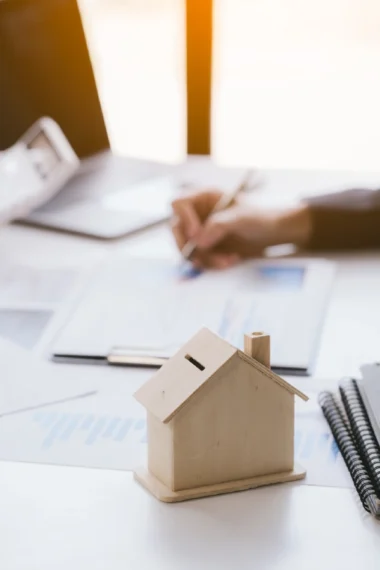Step 4: How to Budget and Save for a Home Purchase

If you are ready to buy your first home, it is key to budget and save for a home purchase. This step walks you through how to prepare a household budget, understand your monthly expenses for homeownership, and start saving for a down payment.
You will learn how to make a plan that is realistic and that will give you confidence.
Why Budget Now?
Before you can save, you need a clear snapshot of how much money you make and where it goes. When you prepare a household budget, you gather your income, bills, and spending so you know exactly what to expect each month. Many buyers underestimate the cost of owning a home and end up “house poor”—spending so much on housing they struggle with other bills. A smart budget helps you avoid that.
1Gather Your Income and Bills
- Collect pay stubs or records of all income.
- List regular bills like utilities, rent, insurance, phone, internet.
- Track optional spending—like coffee, subscriptions, dining out.
- Note how much you save each month right now.
Bring together recent bank statements, receipts, and pay records to build a complete picture.
2List Everything Monthly
Create simple columns:
- Income: take-home pay or other household income.
- Fixed bills: rent, utilities, car payments.
- Variable spending: food out, coffee, entertainment.
- Savings: what you already save.
This shows your total income and expenses and helps you find areas to cut or shift toward savings.
3Review Budget vs Actual
At month’s end, compare your planned budget to real spending. Ask:
- Did you spend more or less?
- If you have extra, can you use more for savings?
- If you overspent, where can you trim?
A budget review helps adjust your plan so you are staying on track and not overspending.
4Plan Around Home Costs
Homeownership brings new expenses beyond just a mortgage. Think about:
- Property taxes
- Home insurance
- Utilities and maintenance
- Possible HOA dues
These items make up your monthly expenses for homeownership. By including them now in your budget, you can avoid surprises later.
5Set Smart Savings Goals
If you are saving for a down payment, the first step is to decide how much you need. Many people think they need 20 percent down, but that is not always true. There are low down payment options available for first-time homebuyers—some as low as 3 percent or even zero down. The exact amount you need depends on the loan program that is best for you.
The smart move is to talk with one of our mortgage professionals. We can help you understand your loan options and what kind of down payment fits your goals.
Once you have a target amount, break it into monthly savings goals. Set up a separate savings account just for your home fund. Make saving automatic if you can, and put that money aside before spending on extras.
Even small steps matter. If you stay focused and stick with it, you will be ready to buy sooner than you think.
6Cut Back and Redirect
Look at your variable spending and ask:
- Can I skip one fewer coffee per day?
- Can I cook instead of eating out a few times?
- Are there services or subscriptions I don’t use?
Even small savings—like bringing lunch or cutting one streaming service—adds up. Put those savings toward your down payment.
7Build an Emergency Cushion
Rent almost always goes up over time.
Owning your home, especially with a fixed-rate mortgage, protects you from those increases. Your payment stays the same for the life of your loan. This predictability makes it easier to plan your budget—and your future.
Putting It All Together
| Task | What to Do |
| Prepare a household budget | Gather and list income, bills, expenses |
| Track actual spending | Compare budget vs real cost each month |
| Factor in homeownership costs | Add taxes, insurance, utilities, repairs |
| Save for a down payment | Set goals and allocate part of income |
| Cut unnecessary variable spending | Redirect towards savings |
| Build emergency fund | Save at least a few months of living costs |
Mid-Content Tip
Remember, when you want to prepare a household budget, you are taking control of your finances and reducing stress as you work toward homeownership.
With a clear budget and steady plan to budget and save for a home purchase, you can confidently move toward owning your first home. By planning for your monthly expenses for homeownership and focusing on saving for a down payment, you put yourself ahead.
If you follow these steps and stay mindful of your spending you will find gaps where you can save more and feel ready when it is time to buy.
Feel free to reach out with any questions. We are happy to walk through your budget, savings plan, or any concerns.
